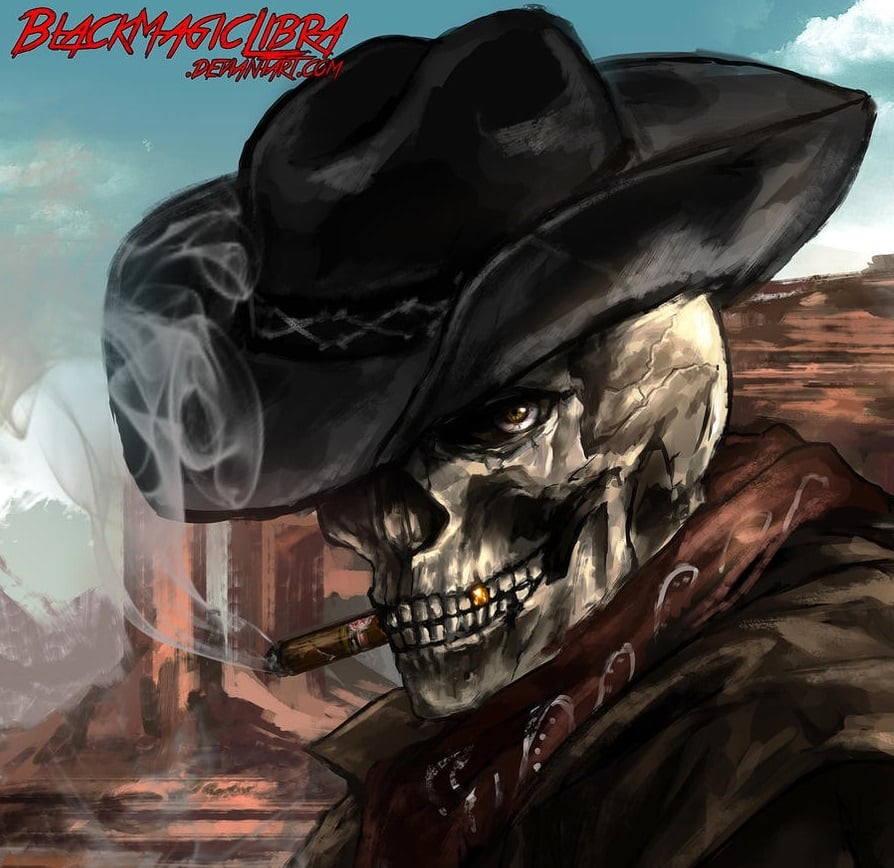Why Greek, Roman and Norse mythologies are overused, where others rarely get used?
Once upon a time, there was torrential rain. Such heavy downpour that the animals saw their homes flooding. They run to the hills, the flooding got worse; they run to higher hills, the flooding was still getting worse; eventually they couldn’t help but gather together onto the largest hill of the region.
Such a ruckus wouldn’t go unnoticed by the Mboi Guazú, the giant serpent; she woke up from her deep slumber, feeling a bit peckish. Unlike most animals she could see in the dark, and what she saw was a feast. Such abundance of prey! She could even ignore their meat, and go straight for the tastiest bits: the eyes.
So she ate the other animals’ eyes. One by one. She ate so many eyes that they wouldn’t fit the serpent’s belly, but she kept eating them. So the eyes started appearing over her body, in-between her scales, creepily emitting light. The more eyes she ate, the more eyes she would have over her body, to the point that she was bright, she was light, she was fire.
She has become the Mboi-Tatá, or the “fire serpent”. And she still roams those lands, looking for prey, burning the path as she goes through. If you ever find her while roaming, don’t ever forget to close your eyes - and hope for the best.
Okay, that doesn’t answer your question but I was in the mood of sharing a bit of the Guarani mythology, the fire serpent. This version of the myth is the one from the Mbyá.
If anyone wants I don’t mind sharing other Guaraní myths. I also remember a few Kaingang ones.
It’s interesting that so many religions from all around the world has a ‘big flooding’ story in it.
Pretty much every place where humans lived on for any period of time has had a devastating flood event, so it’s a “no brainer” when you think about it, much like how most (every?) ancient religions saw Sol and Luna as some sort of god/dess
I also think that it’s interesting. And I wonder if it’s something shared by the “collective memory” of humankind, or if it’s just that flooding events are so common and impactful that any culture is almost certain to develop that myth, given enough time.
We keep living next to rivers because reliable water is the single most important consideration. Flooding happens. Most parts of the world independently developed sun and moon worship as well, and name colors in roughly the same order.
@Soggy@lemmy.world
@ryujin470@fedia.io @lvxferre@mander.xyz @Wild_Mastic@lemmy.world
before the train you could not feed a city without water transport. Your transport power would eat more food than it could deliver
As a Brazilian, I’m deeply ashamed that I never learned about that or frankly any other native mythology (Guarani, Tupi, Yanomami, etc)
To be frank the only ones that I know a bit in depth are the Guaraní and Kaingang ones, as those are the two main Amerindian peoples here in Paraná. I’m completely clueless on the Yanomami one, for example.
As a reptile keeper who knows full well they don’t know when to stop eating, I find this story charming. I want to feed her a basket of eyes (pre-frozen to kill parasites)
One hour from new classic myth to kawaii. I think that’s near Rule 34 turnaround speed.
For further kawaii, I think that the Mboi-Tatá is based on the same constrictor boas that some people keep as pets. It doesn’t inject venom, it sees larger animals as potential prey, and it likes to sleep in burrows, just like the boa.
There’s quite a few other Guaraní myths involving serpents, like the Mboi Tu’i, or “serpent-parrot”. It’s a giant serpent with two legs around the waist, the head of a parrot, and plumes on the head and the neck. It has cursed eyes and a terror-inspiring scream, but it eats only fruits and protects aquatic animals, specially amphibians.
In what I believe to be the Pre-Columbian version of the myth, that serpent-parrot was the second of the Seven Legendary Monsters - the offspring of a cursed couple; their father was the evil spirit Taú and their mother was the most beautiful woman of the tribe, Keraná, who sloped together.
In another story the Mboi Tu’i was actually born as a parrot, and it had free access to The Land of No Evil. However as some mestizos shared him fermented wasp honey (i.e. mead) and the parrot got drunk, it spilled the beans with the mestizos and told them how to enter The Land of No Evil. As a punishment the parrot was partially transformed into a snake, losing the ability to fly and reach the sacred land.
Thanks for sharing! I would like more myths please!
Accordingly to some Guaraní myths, Kuarahy (the Sun) and Jasy (the Moon) are brothers, with the Moon being the younger one. As their mother gave birth, the celestial jaguars (a type of evil spirit) killed her and stole the children, raising them in her place. The children eventually grew up and learned the truth, unleashing their vengeance towards the jaguars, killing almost all of them. They spared a pregnant female, who would eventually become the ancestor of all mundane jaguars.
That’s the origin of such enmity between man and jaguar - as men took Kuarahy and Jasy’s side, and the jaguar their ancestors’. (Jaguars fulfil in Guarani mythology a role similar to the bear in the European ones. It’s an animal to fear, to revere, to avoid, to respect, but that you’re still bound to fight).
In another myth, that would happen before the brothers’ revenge, one of the celestial jaguars (called Charia) was fishing on a river. Charia didn’t notice the brothers, so Kuarahy decided to troll Charia a wee bit - diving and pulling Charia’s hook and line, to imitate a large fish. Charia pulled the fishing rod with all force, falling behind, amusing the brothers. Kuarahy did this three times, and in all three times Charia fell for it.
Then Jasy, amused, said: “now it’s my turn!”. He dives and pulls the hook, like his brother did. However this time Charia was quicker - he fished Jasy, killed him with a wooden club, and brought Jasy’s corpse home as if it was fish, to eat with his wife.
As they were cooking “the fish”, Kuarahy went to Charia’s home, and he was invited to partake on the fish. He thanked Charia, but he said that he’d only eat some maize soup; he also asked for the fish bones, allegedly for stock. He took those bones to a remote place, and used his own divinity to resurrect his brother.
That’s why lunar eclipses happen - the Moon gets devoured by the evil spirit, with the reddish hue in the sky being the Moon’s blood. And the Moon only resurrects, always as a full Moon, because his brother Sun saves and resurrects him.
Egyptian is pretty well-known but underrepresented in popular media.
There’s a lot of weird Talmudic stuff about angels.
cuz you live in the west ;) if you mean online, cuz it’s made by the west
as a Hongkonger, almost all mythological references I see are Chinese
As a neurospicy westerner, learning about Chinese mythology has been endlessly entertaining. So different than mythologies that have been exhaustively explored in western media. I even homebrewed a TTRPG that my friends and I are playing that is set in ancient China. I’ve learned a little Mandarin along the way!
As many others are pointing out, cultural hegemony plays a major role—but I think there’s another factor at play as well:
Greek, Roman, and Norse mythology have been dead and fossilized for a thousand years and more, and in the meantime a long tradition grew up of mining them for allegory, with their prior religious significance stripped away. Most other world mythologies, on the other hand, still form part of active belief systems, or recently died out under colonial occupation and so carry postcolonial political overtones. So borrowing from them could be more problematical, whereas classical mythology has basically been left up for grabs by its former adherents.
I once read a fairly interesting take on this: Historical settings are often chosen to wrap the story in a certain context in order to allow the reader to picture the style and theme without having to establish and explain a new setting first, so basically you skip on world building. If you read an analogy to Zeus you will immediately have an image in mind as well as a bunch of characteristics, no need to establish that beforehand.
Now, considering this it makes sense to choose a setting people already know - the 16th centruy Ottoman Empire is certainly interesting, but the average reader might know next to nothing about it and you have to explain everything first.
Why are these three settings used so much? Well, it’s positive feedback! Literature, Theatres and Video Games will select something well known and it receives popularity. In addition, a piece of media using a less-popular setting will have to a) compete with other media to become popular and b) provide plenty of worldbuilding in order to have the setting make sense. A piece of media that both establishes a “new” setting AND is very popular is going to be rare, making the entry of a new mythology/historical setting into mainstream difficult.
I think there’s at least 3 factors at play here.
First, you’re probably living in a largely eurocentric bubble. You’re not seeing other mythologies because they’re not being marketed to you, and in some cases you may not even realize some of the ways that those mythologies and folklore and such are being presented to you because you just don’t know what to look for (for example, Dragon Ball, in the beginning, borrowed very heavily from the 16th century Chinese novel Journey to the West, which is a hugely important book in Asian literature, and I swear every couple of years there’s some new adaptation coming out, but it’s not nearly as well known to Western audiences) and translations can get a little wonky, if you watch a movie or read a book from a non-western culture, instead of naming specific deities or other mythological figures, the translator may figure that no one reading the translation is going to know who that is so they’ll translate it as something generic like “god” or “a great hero” instead of naming names.
Second, Western media is huge, and kind of overshadows a lot of other cultures. White Americans making movies in Hollywood are going to tend to pull from their own cultural backgrounds, and that often includes Greek, Norse, and Roman mythology.
Finally, a lot of it comes down to which mythologies we have actual written records of. The Norse, Greeks, and Romans all wrote about their gods to some extent, Slavic people, on the other hand, did not write until after they’d been converted to Christianity (the Cyrillic alphabet used in Russian and some other Slavic languages takes it’s name from Saint Cyril, who helped to christianize the Slavic peoples, and was developed by his followers,) so there’s no real first-hand accounts of their beliefs and practices, only second-hand accounts from other cultures who interacted with them and wrote down what they observed, and people recalling stories they’d heard about earlier times, and that comes with them inserting their own biases and interpretations and just plain getting things wrong. So if you wanted to write something about, for example, the Slavic gods Perun and Veles, you probably wouldn’t have as much decent source material to work from as if you wanted to write about the roughly equivalent Norse gods- Thor and Loki.
I wonder if ancient Middle Eastern (pre-islamic) mythologies not being widely known in the eurocentric bubble has more to do with translation difficulties or just a snob view of the “other”; Persian empires had extensive written records (except for the Parthians)
Eurocentrism
In addition to the point about Western mythologies dominating because of cultural exports, I think there is also the undercurrent of England’s original mythologies having been “lost” and so the English were always fascinated by the mythologies of the Norse (due to being invaded) and by the Greeks and Romans (as previous “great” civilizations they aspired to be).
Combine that with America’s obvious English influences and the influence of England as a colonizer around the world, and those mythologies gained a huge outsized influence.
Greek and Roman mythologies are almost the same, and they spread throughout all their conquered lands because they enforced their religion upon them, and any foreign religion was subsumed as ‘oh, that’s just another name for jupiter or something’.
The Greeks and Romans left so many written records and the Greek language is still alive, while Latin is well understood.
Hindu mythology also stayed very firmly alive, but only among people in India, and nobody else cared. Buddhism doesn’t have the same kind of mythology, and it’s different depending on where you go, and even the local politics (actually so is hindu mythology, it’s basically the marvel comics universe but where each village priest makes up a few minor gods for themselves). China and Japan do have their own, pre-buddhist mythology, we see that a lot in anime.
Native American mythology was killed, a few times, by disease, violence, but mostly brutal Christianity.
Finally the Norse gods spent some time in England and Europe, after the Romans and Greeks, so they have some presence where they were considered interesting.
Mostly, English-centric literature and media, and literature students study it EXTENSIVELY for their degree, basically as a deconstruction of the evolution of storytelling and underlying tropes/archetypes. Less of this spread from elsewhere.
Greek and Roman mythologies are almost the same
Kind of. They’re like bananas and plantains - they look similar, they have a similar origin, but once you bite into them they taste completely different.
A lot of the similarities are shared since the beginning, as they backtrack to the ancient Indo-European polytheism; you often see those similarities popping up in Norse mythology and Hinduism, for the same reason.
And beyond that, the Romans went out of their way to interpret foreign gods as variations of their own native gods, or outright copy them; not just the Greek ones, even stuff like Isis and Yahweh. So those similarities between Roman and Greek mythologies got actively reinforced once the Romans conquered Greece, and you got gods like Apollo and Bacchus being borrowed.
But the Romans still had their own specific gods, without Greek equivalents; like Janus Bifrons, who governs transitions and gates. And I feel like there’s some “humanity” in the Greek myths absent from the Roman myths, almost like one saw the gods as powerful but flawed individuals and another as aspects of nature. For example you can cheat a Greek god and get away with it, but not a Roman one.
[Sorry for the info dump. I love this stuff.]
Because the west, which has been heavily influenced by these cultures, controls most of the media you consume.
I would like to see more Native American mythology.
I need mesoamerican mythology in a visual format.
It’s like having kings or elves in a fantasy story. Readers know what to expect, so the writer doesn’t need to establish that they’re in charge, or that they’re noble, etc. They’re archetypes that most consumers are familiar with.
And writers stick to what they know. If they’ve been exposed to these mythologies, then they’ll use them. If they’re exposed to other mythologies, they’ll use those.
They are pretty fucking sweet
deleted by creator
Rule of Cool.
Spartans, Romans, Vikings.







